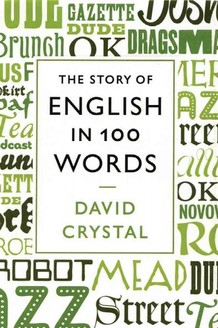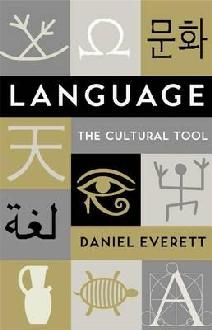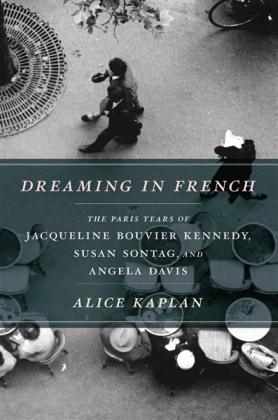- HOME
- INTRO TO THE FORUM
- USE AND MISUSE
- BADLY WRITTEN, BADLY SPOKEN
- GETTING
TO KNOW ENGLISH - PREPARING FOR ENGLISH PROFICIENCY TESTS
- GOING DEEPER INTO ENGLISH
- YOU ASKED ME THIS QUESTION
- ADVOCACIES
- EDUCATION AND TEACHING FORUM
- ADVICE AND DISSENT
- MY MEDIA ENGLISH WATCH
- STUDENTS' SOUNDING BOARD
- LANGUAGE HUMOR AT ITS FINEST
- THE LOUNGE
- NOTABLE WORKS BY OUR VERY OWN
- ESSAYS BY JOSE CARILLO
- Long Noun Forms Make Sentences Exasperatingly Difficult To Grasp
- Good Conversationalists Phrase Their Tag Questions With Finesse
- The Pronoun “None” Can Mean Either “Not One” Or “Not Any”
- A Rather Curious State Of Affairs In The Grammar Of “Do”-Questions
- Why I Consistently Use The Serial Comma
- Misuse Of “Lie” And “Lay” Punctures Many Writers’ Command Of English
- ABOUT JOSE CARILLO
- READINGS ABOUT LANGUAGE
- TIME OUT FROM ENGLISH GRAMMAR
- NEWS AND COMMENTARY
- BOOKSHOP
- ARCHIVES
Click here to recommend us!
READINGS IN LANGUAGE
This section features links to interesting, instructive, or thought-provoking readings about the English language and related disciplines. The selections could be anywhere from light and humorous to serious and scholarly, and they range widely from the reading, writing, listening, and speaking disciplines to the teaching and learning of English.
A grand tour of the science and mysteries of creativity
Where are the mainsprings of creativity and how do we tap into them?
In an engaging new book, Imagine: How Creativity Works (Houghton Mifflin Harcourt, 279 pages), Jonah Lehrer takes on the role of knowledgeable tour guide to the mysteries of the imagination and the science of innovation. He deftly teases out the social and economic implications of scientific theories about the creative process, deconstructing how it unfolds in invention and innovation as well as in artistic creation and business problem-solving.
“Creativity shouldn’t be seen as something otherworldly,” says Lehrer in his introduction to the book. “It shouldn’t be thought of as a process reserved for artists and inventors and other ‘creative types.’ The human mind, after all, has the creative impulse built into its operating system, hard-wired into its most essential programming code. At any given moment, the brain is automatically forming new associations, continually connecting an everyday x to an unexpected y. This book is about how that happens. It is the story of how we imagine.”
Says Alexander Linklater in his review of Imagine in the April 1, 2012 issue of The Observer: “What Lehrer achieves in the book overall is a roaming yet cohesive description of the creative process, applied across disciplines. Creativity, as he writes, is ‘a catch-all term for a variety of distinct thought processes.’ With as much inventiveness as he reveals in his subjects, he turns up examples of risk-taking, innovation, connectivity, recombination, disinhibition, migration, urban and cultural density and distractibility competing with concentration… He gives a vivid sense of the brain at work.”
Read an excerpt from Jonah Lehrer’s Imagine in the Barnes&Noble website now!
Read Alexander Linklater’s review of Imagine in The Observer now!
ABOUT THE AUTHOR:
Jonah Lehrer, author of The New York Times bestsellers Proust Was A Neuroscientist and How We Decide, is contributing editor at Wired Magazine and a frequent contributor to The New Yorker. He writes the Head Case column for The Wall Street Journal and his writing has also appeared in Nature, The New York Times Magazine, and Scientific American. He graduated from Columbia University and attended Oxford University as a Rhodes Scholar.
OTHER INTERESTING READINGS:
In “From ‘App’ To ‘Tea’: English Examined In 100 Words,” the NPR staff reviews David Crystal’s newest book, The Story of English In 100 Words, where the noted Irish linguist explains how the English language has evolved through a collection of words such as classic ones like “tea” and new words like “app.” Crystal tells NPR’s Neal Conan that every word has a story to tell, even commonplace ones: “Poor little words like ‘and,’ and ‘the,’ and ‘of’... they don’t get any press at all. And this is a great shame, because without them, we have no syntax. We have no grammar. The whole language falls apart.”

Read “From ‘App’ To ‘Tea’” in the NPR website now!
Read an excerpt from David Crystal’s The Story of English In 100 Words in the NPR website now!
In “Repeat After Me,” a review of Daniel L. Everett’s Language: The Cultural Tool in the April 6, 2012 issue of The New York Times, John McWhorter says the book is a useful study of a burgeoning language theory compatible with Darwinism, anthropology, psychology and philosophy— an interdisciplinary orientation that debunks Noam Chomsky’s Universal Grammar Theory. Everett contends that after almost 50 years, serious evidence for Chomsky’s theory remains elusive and declares that while it was a good idea, it just didn’t pan out and is now as good as dead.

Read John McWhorter’s “Repeat After Me” in The New York Times now!
In “Gray Matter: Why Bilinguals Are Smarter,” an article that came out in the March 17, 2012 issue of The New York Times, Science Magazine staff writer Yudhijit Bhattacharjee reports on recent scientific findings that the ability to speak two languages not only makes us communicate with a wider range of people but actually makes us smarter. “Being bilingual… can have a profound effect on your brain, improving cognitive skills not related to language and even shielding against dementia in old age,” Bhattacharjee says.
Read Yudhijit Bhattacharjee’s “Why Bilinguals Are Smarter” in The New York Times now!
In “3 American Women in Their Parisian Moments,” a review of Alice Kaplan’s Dreaming in French in the April 3 issue of The New York Times, Dwight Garner says that the book is easy to admire but a hard one to muster much enthusiasm for. He says that Kaplan’s account of the formative year in Paris of each of three ambitious and striking American women— Jacqueline Bouvier, Susan Sontag and Angela Davis—“makes a half bang, like a wet firework that flickers colorfully but never rises from the ground.”

Read Dwight Garner’s “3 American Women in Their Parisian Moments” in The New York Times now!
Click to read comments or post a comment
View the complete list of postings in this section
(requires registration to post)






